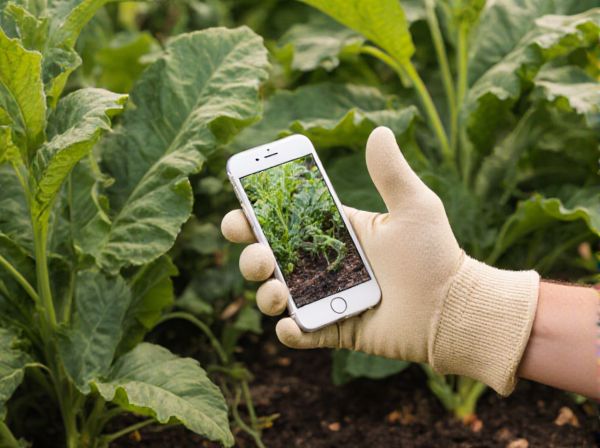
Single Crop Harvesting vs Intercropping Harvest Illustration
Single crop harvesting allows for uniform crop management, simplifying tasks like planting, irrigation, and pest control, which can lead to higher efficiency and yield consistency. Intercropping harvesting, however, promotes biodiversity and soil health by combining different crops in the same area, often enhancing pest resistance and resource utilization. While single crop systems focus on optimizing output for one species, intercropping balances multiple crops, benefiting long-term sustainability and resilience.
Table of Comparison
| Aspect | Single Crop Harvesting | Intercropping Harvest |
|---|---|---|
| Yield Efficiency | Maximized for uniform crop | Potentially higher total yield via crop diversity |
| Resource Use | Focused on one crop's needs | Optimized resource sharing among crops |
| Harvest Timing | Uniform, simplifies scheduling | Varied, requires staggered harvesting |
| Labor Requirement | Lower due to uniform process | Higher due to complexity and multiple crops |
| Soil Health | Risk of nutrient depletion | Improves soil fertility and reduces erosion |
| Pest and Disease Management | Higher vulnerability | Reduced risk via crop diversity |
Understanding Single Crop Harvesting
Single crop harvesting involves cultivating and harvesting one type of crop in a defined area, which simplifies management practices such as irrigation, fertilization, and pest control. This approach allows for uniform growth stages and streamlined mechanical harvesting techniques, increasing efficiency and reducing labor costs. Understanding single crop harvesting is essential for optimizing yield and ensuring consistent crop quality in large-scale agricultural operations.
Basics of Intercropping Harvest
Intercropping harvest involves cultivating two or more crops simultaneously on the same land, enhancing biodiversity and resource use efficiency compared to single crop harvesting. This method optimizes spatial and temporal distribution of crops, reducing pest incidence and improving soil health through complementary root structures and nutrient cycles. Successful intercropping harvest requires careful planning of crop combinations, synchronized growth stages, and tailored harvesting techniques to maximize yield and minimize losses.
Pros and Cons of Monoculture Harvests
Monoculture harvests, or single crop harvesting, enable streamlined planting, maintenance, and harvesting processes, resulting in higher efficiency and ease of mechanization. However, monocultures often lead to increased vulnerability to pests, diseases, and soil depletion due to lack of biodiversity. This method also typically requires more chemical inputs such as fertilizers and pesticides, which can negatively impact long-term soil health and environmental sustainability.
Advantages of Intercropping in Harvest Season
Intercropping during the harvest season enhances overall yield by optimizing space and resource utilization compared to single crop harvesting. This method improves pest and disease management through increased biodiversity, reducing reliance on chemical pesticides. Furthermore, intercropping promotes soil health and reduces erosion, ensuring sustainable productivity for future harvests.
Yield Comparison: Single Crop vs Intercropping
Harvesting single crops typically results in higher yields per hectare for the main crop due to optimized nutrient management and reduced competition. Intercropping, while producing slightly lower individual crop yields, maximizes overall productivity and land use efficiency by combining complementary crops that enhance soil fertility and reduce pest incidence. Studies show intercropping systems can increase total biomass yield by 15-35% compared to monoculture farming, offering a sustainable approach to boost food security.
Pest and Disease Management Strategies
Single crop harvesting allows targeted pest and disease management through uniform application of fungicides and pesticides, reducing the complexity of control measures. Intercropping harvesting enhances natural pest suppression by promoting biodiversity, which disrupts pest life cycles and reduces disease incidence via complementary plant interactions. Integrated pest management strategies in intercropping leverage crop diversity to minimize chemical inputs and enhance ecological balance.
Soil Health Impacts of Different Harvest Methods
Single crop harvesting often leads to soil nutrient depletion and reduced microbial diversity due to monoculture practices, increasing vulnerability to erosion and soil degradation. Intercropping harvest methods enhance soil health by promoting diverse root structures and improving organic matter content, which boosts nutrient cycling and strengthens soil microbial ecosystems. Maintaining soil fertility through intercropping reduces the need for synthetic fertilizers, supporting sustainable agricultural productivity.
Labor and Resource Efficiency in Harvesting
Single crop harvesting streamlines labor tasks and equipment usage, resulting in higher efficiency and reduced operational costs due to uniform crop characteristics and synchronized maturity periods. Intercropping harvesting demands more labor-intensive efforts and diverse machinery to manage different crop types and staggered harvest times, often increasing resource consumption and complexity in scheduling. Optimizing labor and resource allocation in single crop systems enhances productivity, while intercropping requires careful planning to balance trade-offs between biodiversity benefits and harvesting efficiency.
Economic Benefits: Which Method Pays More?
Single crop harvesting often maximizes short-term economic returns due to streamlined mechanization and uniform crop management, resulting in higher yields per hectare for specific high-value crops. Intercropping harvesting, while potentially more complex, enhances overall farm resilience and diversifies income streams, reducing market risk and providing steady revenue through multiple harvests. Economic benefits of intercropping can surpass single cropping in fluctuating markets by optimizing land use efficiency and lowering input costs through natural pest control and soil fertility improvements.
Sustainable Harvesting: Future Trends and Recommendations
Sustainable harvesting practices in single crop harvesting emphasize maximizing yield through precision techniques and resource-efficient inputs, while intercropping harvest promotes biodiversity and soil health by combining complementary crops. Future trends highlight integrated sensor technologies and AI-driven monitoring systems to optimize timing and reduce resource waste in both methods. Recommendations include adopting agroecological principles, enhancing crop diversity, and implementing adaptive management strategies to ensure long-term productivity and environmental resilience.
Single Crop Harvesting vs Intercropping Harvest Infographic

 gardendif.com
gardendif.com